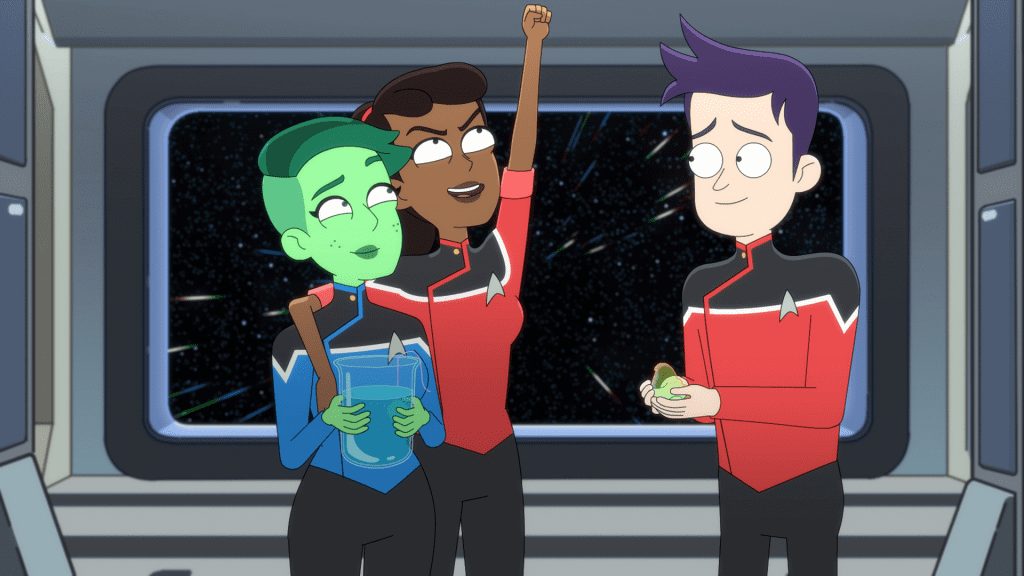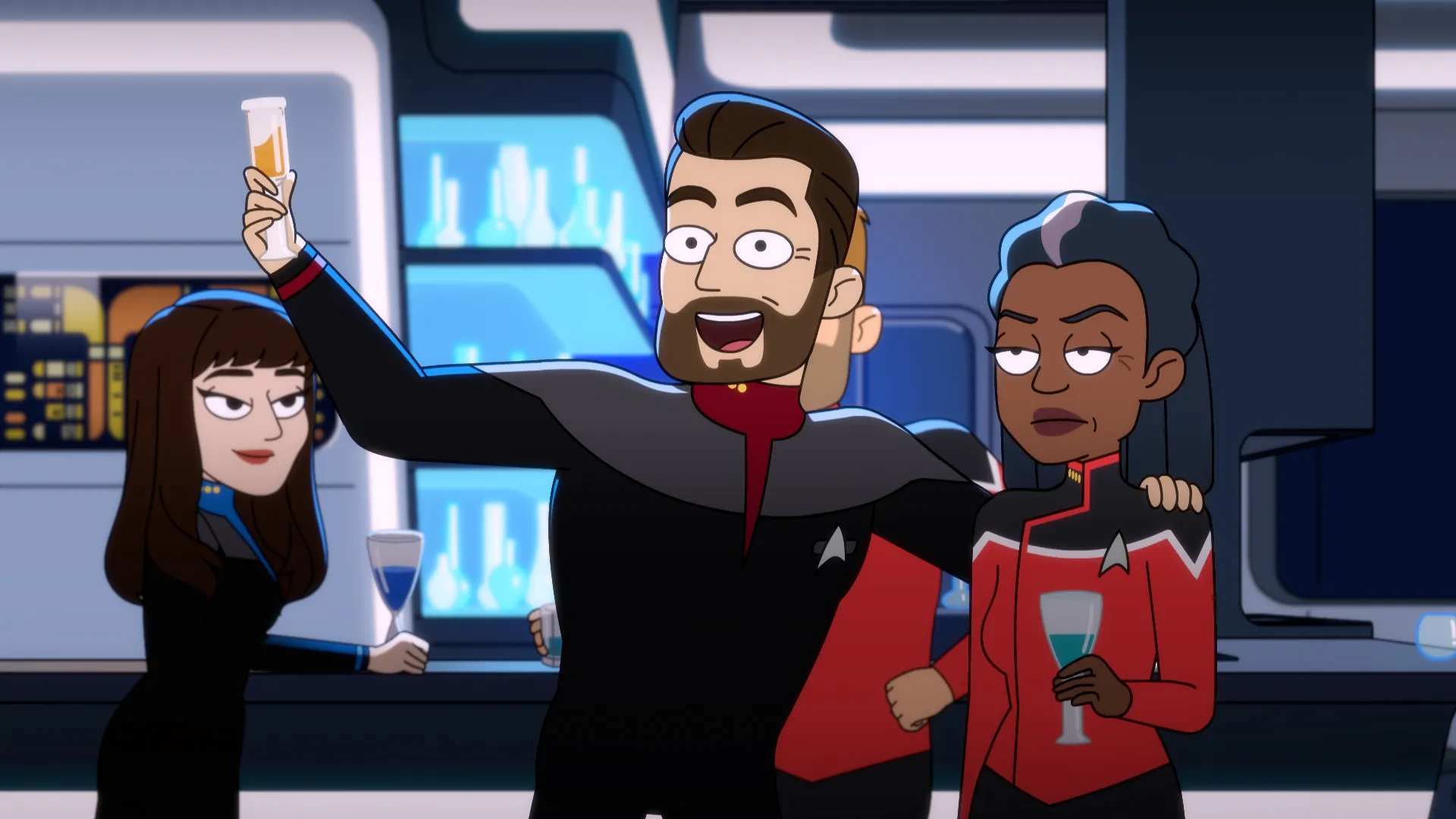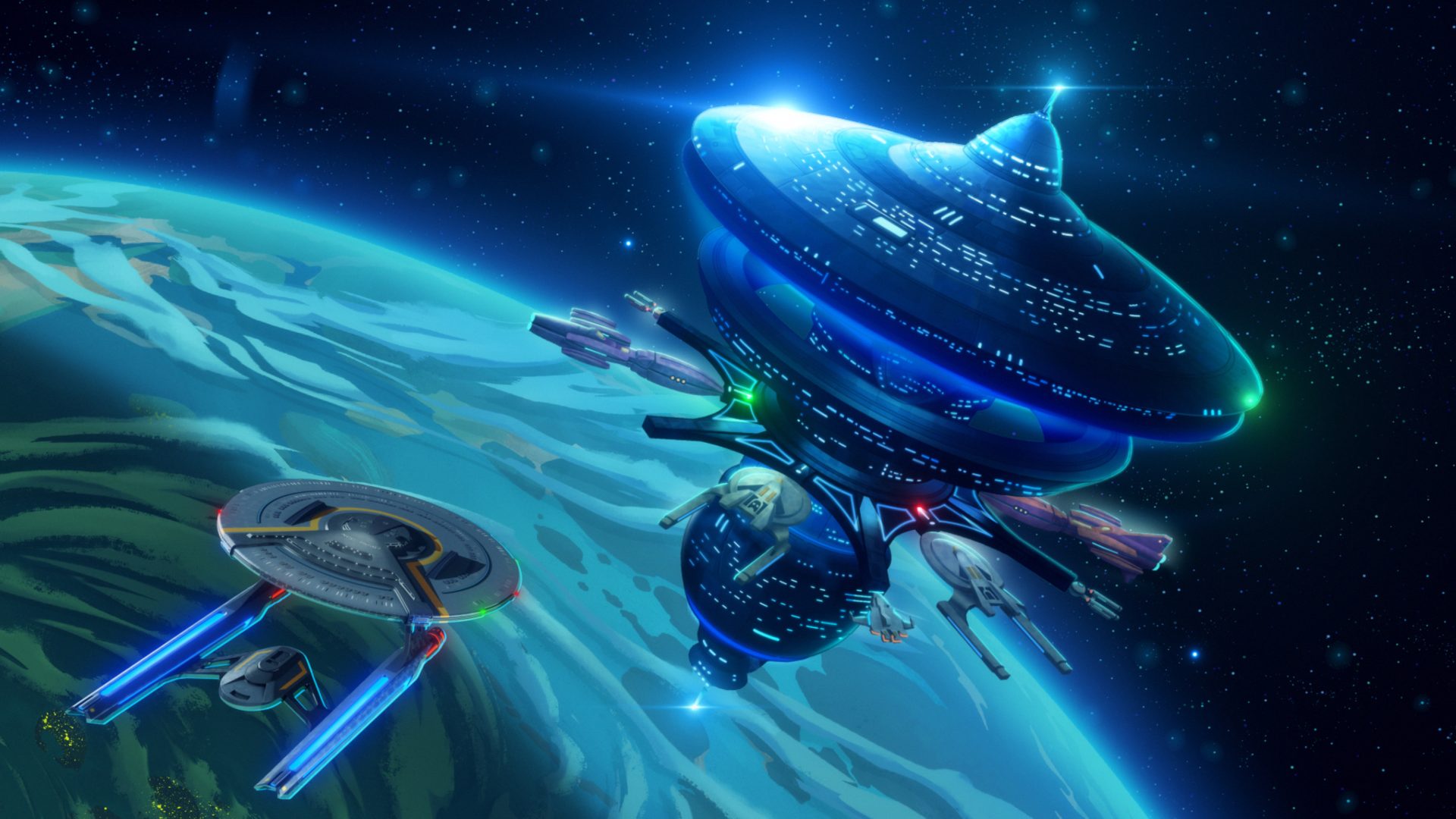Star Trek: Lower Decks – A Surprise Animated Hit in the Star Trek Universe
“Star Trek: Lower Decks” is an animated series set in the Star Trek universe, focusing on the less-glamorous crew members aboard the USS Cerritos, a Starfleet support vessel, stationed in the year 2380. In a franchise known for its grand exploratory missions and complex moral dilemmas, “Lower Decks” takes a lighthearted approach, offering a humorous look at everyday life on the lower decks of a starship.
The Star Trek franchise has seen a resurgence in popularity with the critical success of its animated spin-off, Star Trek: Lower Decks. This show has been hailed by some as the best Star Trek show since Deep Space Nine (DS9), an intriguing claim that beckons further examination. This analysis will delve into the reasons behind this assertion, focusing on storytelling, humor, character development, and the engagement with social commentary and political themes.
Plot, Setting, and Characters

The show revolves around a group of four ensigns – Beckett Mariner, Brad Boimler, D’Vana Tendi, and Sam Rutherford – who must navigate their duties and friendships amidst the unpredictable challenges posed by life in Starfleet. Their escapades provide a fresh lens to the Star Trek universe, showing the inner workings of a starship from a more relatable, human perspective.
Animation Quality

“Lower Decks” boasts a modern, yet retro animation style reminiscent of shows like Rick and Morty which suits the series’ comedic tone. The character designs are distinctive and colorful, consistent with the vibrant palette of the Star Trek universe. The animation is fluid and energetic, effectively conveying the fast-paced action and humorous moments throughout the series.
Scripting, Pacing, and Storyline
The writing of “Lower Decks” truly stands out in its ability to balance a comedic tone with the thought-provoking themes that are a key part of the Star Trek franchise. From clever in-jokes and references aimed at longtime fans to insightful character development, the show pays homage to its source material while carving out its own unique identity. The pacing feels just right, with each subplot neatly tying into the central theme of an episode. The series stays true to the episodic structure of classic Star Trek, while also incorporating overarching character arcs that develop over the course of the season.
Humor and Sci-Fi Elements

“Lower Decks” excels in blending humor with the sci-fi elements inherent to the Star Trek universe. The comedy is both character-driven and situational, and although there are occasional misses (such as the polarizing character Badgey), the humor remains a key strength of the show. Moreover, the series maintains the scientific intrigue and ethical dilemmas common to Star Trek stories, adding a layer of depth that complements its comedic bent.
Comparison and Novelty
“Lower Decks” distinguishes itself from other Star Trek series through its unique animation style and comedic approach. Unlike the original series, TNG, or DS9, “Lower Decks” is unapologetically lighthearted and embraces its role as a love letter to Star Trek. While some fans may be initially put off by the show’s aesthetics and tone, many will find themselves won over by its authenticity and charm.
Storytelling: Reinvention within Tradition

One of the key similarities between Lower Decks and Deep Space Nine is their willingness to reinvent traditional Star Trek concepts without straying too far from the franchise’s core principles. DS9, for example, departed from the pre-established formula by placing its characters on a space station instead of a starship. This allowed for more exploration of political intrigue, long-term story arcs, and the interactions among various alien species.
Similarly, Lower Decks stands out as it follows a core ensemble of bottom-rung characters aboard the U.S.S. Cerritos, one of the least important ships in the fleet. By focusing on these unconventional characters, the show can playfully engage with familiar Star Trek tropes while turning them on their head. What both DS9 and Lower Decks achieve is a fresh perspective on the Star Trek universe, which is vital for keeping the franchise relevant and engaging.
Character Development: Depth and Nuance

One of the most notable aspects of Lower Decks is its humor, which is often derived from its deep love and understanding of the Star Trek universe. Using in-jokes and references, the show manages to provide both entertaining content for long-time fans and an engaging entry point for newcomers. However, the humor in Lower Decks is not limited to these references, as the show also excels in its character development, much like Deep Space Nine.
In DS9, characters were given complex backgrounds and development arcs that allowed them to grow throughout the show’s seven seasons. Lower Decks achieves similar depth with its ensemble, albeit on a smaller scale and with a more comedic lens. The main cast of Lower Decks has well-defined personalities and genuine chemistry, allowing for organic growth and engaging character interactions.
Social Commentary and Political Themes: Engaging with Modern Society
One of the critical aspects of any Star Trek show is its engagement with social commentary and political themes. Both Deep Space Nine and Lower Decks excel in this regard, albeit in different ways. DS9 tackled themes such as religion, terrorism, and political intrigue, often using allegory and nuanced storytelling to provide thought-provoking content for viewers to ponder.
Although Lower Decks may not appear to have the same level of gravitas due to its animated format and comedic tone, the show still engages with relevant issues in creative ways. For example, it explores the dynamics of power and bureaucracy in the Starfleet hierarchy and portrays how characters navigate life as lower-level crew members. Moreover, it subtly critiques the glorification of characters who occupy high-ranking positions, providing a fresh perspective on leadership and responsibility.

